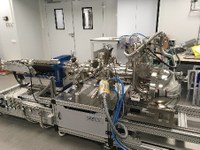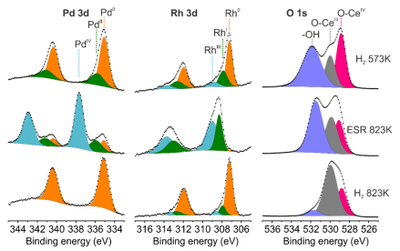Operando characterization and study of catalytic active sites
|
The development of better catalysts is a passionate topic at the forefront of modern science, where operando techniques are necessary to identify the nature of the active sites. The surface of a solid catalyst is dynamic and dependent on the reaction environment and, therefore, the catalytic active sites may only be formed under specific reaction conditions and may not be stable either in air or under high vacuum conditions. The identification of the active sites and the understanding of their behavior are essential information towards a rationale catalyst design. We use NAP-XPS, Raman, FTIR, DRIFT in our laboratory and use synchrotron radiation for XRD, XANES, EXAFS and NAP-XPS as well as ETEM in other laboratories to characterize the active sites of monometallic and bimetallic nanoparticles supported over different inorganic oxides, in particular CeO2.
|
 |  |  |
|---|
Some relevant publications:
Garcia, X., Soler, L., Divins, N.J., Vendrell, X., Serrano, I., Lucentini, I., Prat, J., Solano, E., Tallarida, M., Escudero, C., Llorca, J. Cria-based catalysts studied by near ambient pressure X-ray photoelectron spectroscopy: A review. Catalysts, 2020, 10, 286.
Aneggi, E., Llorca, J., Trovarelli, A., Aouine, M., Vernoux, P. In situ environmental HRTEM discloses low temperature carbon soot oxidation by ceria-zirconia at the nanoscale. Chemical Communications, 2019, 55, 3876-3878.
Huck, C., Soler, L., Casanovas, A., Marini, C., Prat, J., Llorca, J., Escudero, C. Unraveling the chemical state of cobalt in Co-based catalysts during ethanol steam reforming: an in situ study by near ambient pressure XPS and XANES. ACS Catalysis, 2018, 8, 9625-9636.
Soler, L., Casanovas, A., Escudero, C., Pérez-Dieste, V., Aneggi, E., Trovarelli, A., Llorca, J. Ambient pressure photoemission spectroscopy reveals the mechanism of carbon soot oxidation in ceria-based catalysts. ChemCatChem, 2016, 8, 2748-2751.
Share: